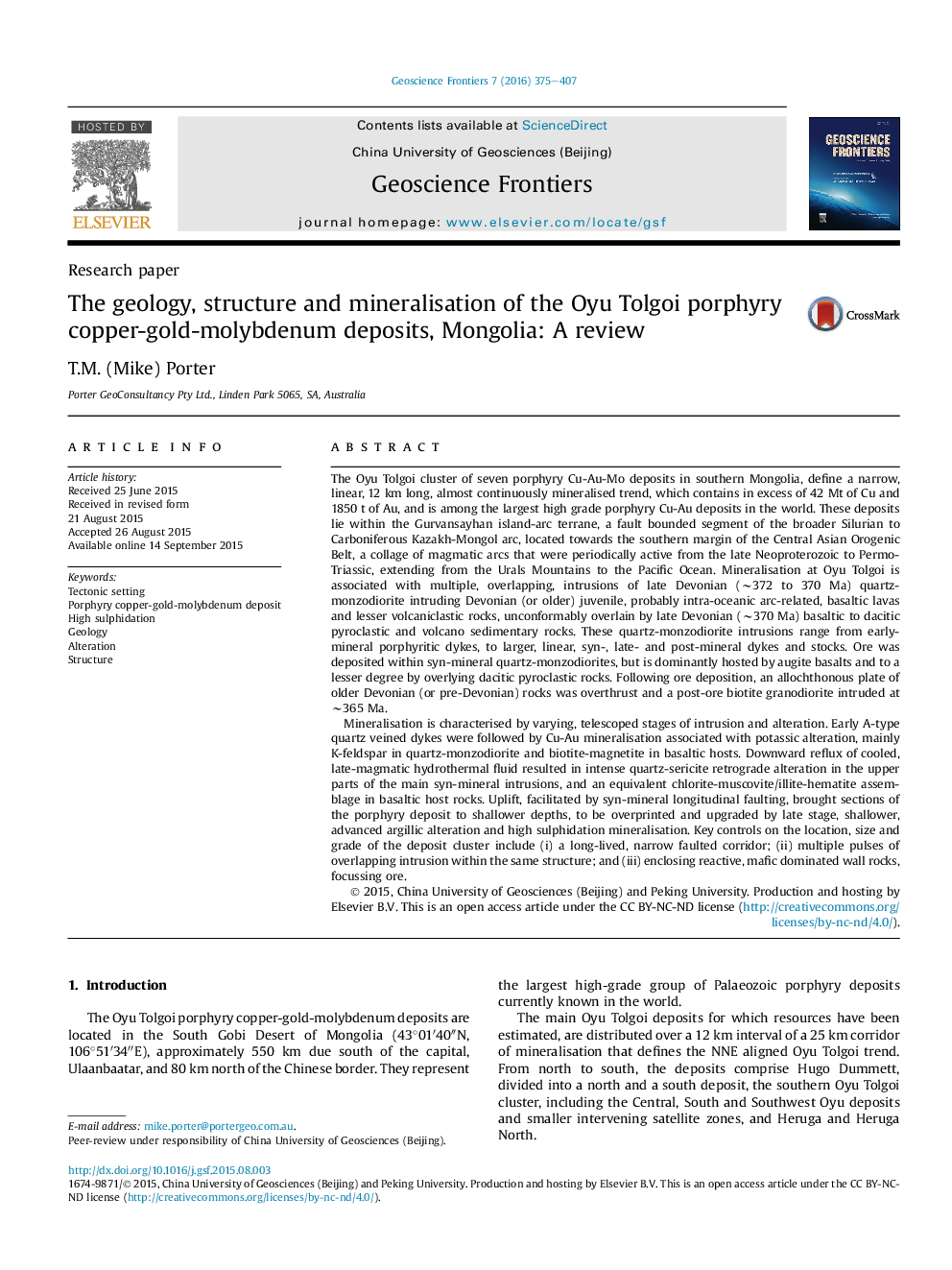| کد مقاله | کد نشریه | سال انتشار | مقاله انگلیسی | نسخه تمام متن |
|---|---|---|---|---|
| 4681507 | 1348854 | 2016 | 33 صفحه PDF | دانلود رایگان |

• The Oyu Tolgoi porphyry Cu-Au-Mo deposits lie within the Central Asian Orogenic Belt.
• Ore occurs as telescoped prograde porphyry, phyllic retrograde and high sulphidation overprints.
• High grade ore is controlled by a structural corridor, repeated intrusion and reactive host rocks.
The Oyu Tolgoi cluster of seven porphyry Cu-Au-Mo deposits in southern Mongolia, define a narrow, linear, 12 km long, almost continuously mineralised trend, which contains in excess of 42 Mt of Cu and 1850 t of Au, and is among the largest high grade porphyry Cu-Au deposits in the world. These deposits lie within the Gurvansayhan island-arc terrane, a fault bounded segment of the broader Silurian to Carboniferous Kazakh-Mongol arc, located towards the southern margin of the Central Asian Orogenic Belt, a collage of magmatic arcs that were periodically active from the late Neoproterozoic to Permo-Triassic, extending from the Urals Mountains to the Pacific Ocean. Mineralisation at Oyu Tolgoi is associated with multiple, overlapping, intrusions of late Devonian (∼372 to 370 Ma) quartz-monzodiorite intruding Devonian (or older) juvenile, probably intra-oceanic arc-related, basaltic lavas and lesser volcaniclastic rocks, unconformably overlain by late Devonian (∼370 Ma) basaltic to dacitic pyroclastic and volcano sedimentary rocks. These quartz-monzodiorite intrusions range from early-mineral porphyritic dykes, to larger, linear, syn-, late- and post-mineral dykes and stocks. Ore was deposited within syn-mineral quartz-monzodiorites, but is dominantly hosted by augite basalts and to a lesser degree by overlying dacitic pyroclastic rocks. Following ore deposition, an allochthonous plate of older Devonian (or pre-Devonian) rocks was overthrust and a post-ore biotite granodiorite intruded at ∼365 Ma.Mineralisation is characterised by varying, telescoped stages of intrusion and alteration. Early A-type quartz veined dykes were followed by Cu-Au mineralisation associated with potassic alteration, mainly K-feldspar in quartz-monzodiorite and biotite-magnetite in basaltic hosts. Downward reflux of cooled, late-magmatic hydrothermal fluid resulted in intense quartz-sericite retrograde alteration in the upper parts of the main syn-mineral intrusions, and an equivalent chlorite-muscovite/illite-hematite assemblage in basaltic host rocks. Uplift, facilitated by syn-mineral longitudinal faulting, brought sections of the porphyry deposit to shallower depths, to be overprinted and upgraded by late stage, shallower, advanced argillic alteration and high sulphidation mineralisation. Key controls on the location, size and grade of the deposit cluster include (i) a long-lived, narrow faulted corridor; (ii) multiple pulses of overlapping intrusion within the same structure; and (iii) enclosing reactive, mafic dominated wall rocks, focussing ore.
Figure optionsDownload as PowerPoint slide
Journal: Geoscience Frontiers - Volume 7, Issue 3, May 2016, Pages 375–407